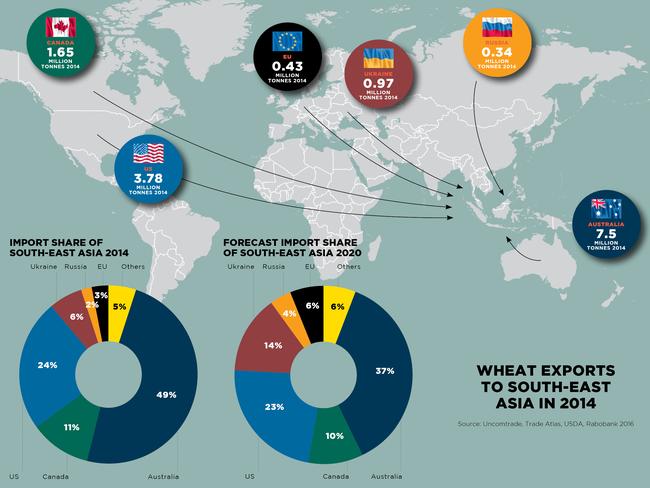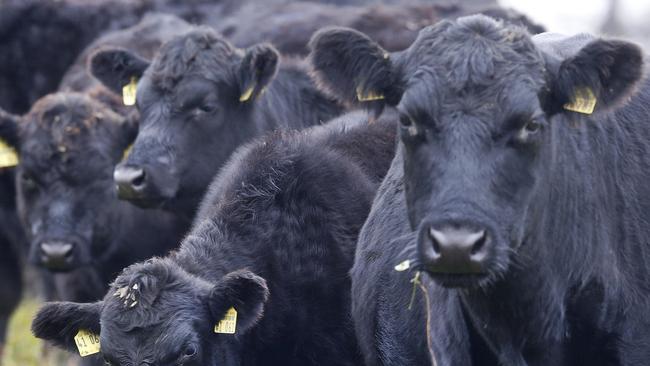South-East Asian wheat demand expected to rise, according to Rabobank
SOUTH-EAST Asian wheat imports are expected to rise by 33 per cent in the next five years.
SOUTH-EAST Asian wheat imports are expected to rise by 33 per cent in the next five years.
Dutch bank Rabobank forecasts South-East Asian wheat demand will expand at an annual rate of 4.5 per cent, due to rising incomes and westernisation of diets.
Rabobank says wheat imports into Indonesia, Malaysia, Thailand, Vietnam and the Philippines collectively accounted for about 18.5 million tonnes in 2014-15. But this is expected to top 25 million tonnes within five years.
Indonesia is currently the world’s second biggest wheat market, importing 9.1 million tonnes last year – or about half the region’s usage. It sits behind Egypt, which imported about 11.5 million tonnes last year.

Indonesia has been Australia’s most important wheat customer for more than a decade. Some analysts are now predicting Indonesia will soon overtake Egypt as the world’s biggest wheat buyer.
According to Rabobank, Indonesia has an annual per capita wheat consumption of 29kg. Malaysia is almost double that, at 47kg per capita, while Thailand remains low at 17kg.
All are well below the global average of 78kg per capita and significantly lower than the world’s biggest producer of wheat – China – on 83kg per capita.
By comparison, Australia has a per capita consumption of 300kg, while Egypt sits on 225kg. If Indonesian consumption was to rise to the same level as Malaysia, it would need to import an extra five million tonnes of wheat a year.
But a rise in Indonesian consumption will take many more years to eventuate. In the meantime, Rabobank is forecasting South-East Asian wheat imports to rise by about seven million tonnes in the next five years. But Australia cannot expect to be the major supplier. “In order to service the growing South-East Asian market, Rabobank expects to see a shift towards wheat originating in the Black Sea region,” the bank says.
READ MORE: BLACK CLOUDS LOOM
READ MORE: RICHMOND’S AWAY GAME
“Due to favourable cost competitiveness factors, such as production and sea freight costs, the additional growth in wheat demand throughout South-East Asia – particularly demand for feed wheat – is expected to be increasingly met by imports from the Black Sea region,” its researchers say. “Over the past five years, competitive pressures as a result of low freight rates have contributed to a reduction in Australia’s freight advantage against the Black Sea region by up to 50 per cent.”
According to Rabobank, Russia currently accounts for 2 per cent of South-East Asia’s wheat imports and the Ukraine, 6 per cent. The bank forecasts Russia to supply 4 per cent of the South-East Asia market by 2020 and the Ukraine, 14 per cent.
While it is well below Australia’s historical level of about 45 per cent, the trend is a wake-up call for the Australian grains industry.


